Top non rising stem gate valve in China introduce,list main products and website if have
One top non-rising stem gate valve manufacturer in China is Zhejiang WOD Valve Co., Ltd. They specialize in producing a wide range of industrial valves, including gate valves, globe valves, check valves, and ball valves.
Their main product, the non-rising stem gate valve, is designed for applications where vertical space is limited. The valve operates by turning the handle to open or close the gate inside the valve body, without the need for the stem to move up and down. This type of design is suitable for use in underground pipelines or confined spaces.
Apart from non-rising stem gate valves, WOD Valve also offers rising stem gate valves, globe valves, check valves, and ball valves for various industries such as oil and gas, chemical, water treatment, and power generation.
To learn more about their products, you can visit their website at https://www.wodvalve.com/. WOD Valve Co., Ltd. is committed to providing high-quality industrial valves that meet international standards and customer requirements, making them a reliable choice for your valve needs.
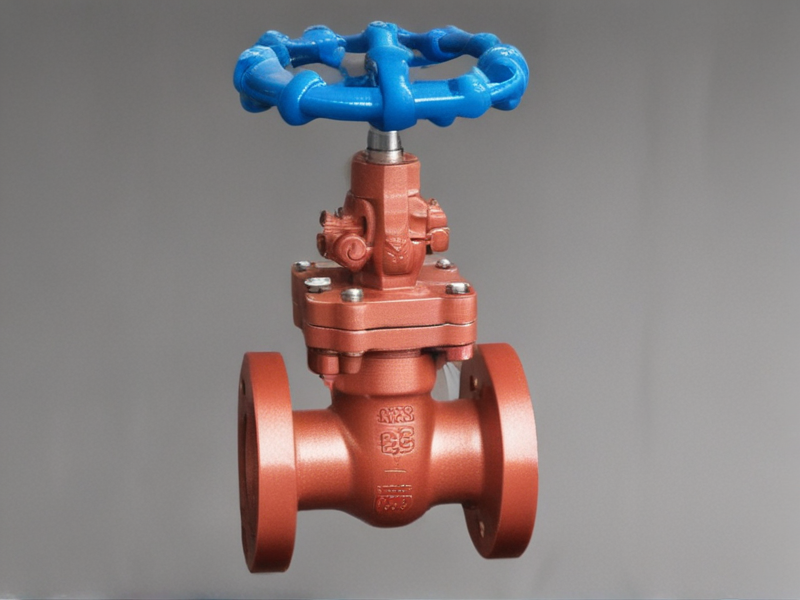
Types of non rising stem gate valve
There are several types of non-rising stem gate valves that are commonly used in different industrial applications. One type is the bolted bonnet non-rising stem gate valve, which features a stationary gate with a threaded stem. This type of valve requires a bonnet to be removed in order to adjust or replace the gate, making it suitable for high-pressure and temperature applications.
Another type is the pressure seal non-rising stem gate valve, which is designed to handle high pressure and temperature conditions. This type of valve features a self-sealing construction that eliminates the need for external seals, making it ideal for critical processes in industries such as oil and gas, chemical, and power generation.
A third type is the resilient seated non-rising stem gate valve, which is commonly used in water and wastewater treatment systems. This type of valve features a rubber or synthetic seat that provides a tight seal, preventing leakage and ensuring smooth operation over time.
Overall, non-rising stem gate valves offer reliable performance, easy maintenance, and long service life in a variety of industrial applications. Whether it be for high-pressure systems, critical processes, or water treatment facilities, these types of gate valves are essential components that play a crucial role in controlling the flow of fluids and gases in a safe and efficient manner.
Pros and Cons of Using non rising stem gate valve
Non-rising stem gate valves have several advantages over the traditional rising stem gate valves. One of the main pros is its compact design, which makes it suitable for applications with limited space. Additionally, non-rising stem gate valves are easier to install and maintain as they do not require as much vertical space for operation.
Another advantage of non-rising stem gate valves is that they provide a clearer indication of the valve’s position. This can be beneficial in situations where quick identification of the valve’s status is important. The absence of a rising stem also means that there is less chance of corrosion or damage to the stem, resulting in a longer lifespan for the valve.
However, there are also some drawbacks to using non-rising stem gate valves. One of the main cons is that they may be more prone to jamming compared to rising stem gate valves. This can occur if dirt or debris gets trapped in the valve’s mechanism, causing it to malfunction.
Additionally, non-rising stem gate valves may be more expensive than rising stem gate valves, which can be a deterrent for some users. They also require special tools for maintenance, which can add to the overall cost of using these valves.
In conclusion, non-rising stem gate valves have several advantages such as a compact design, easier installation, and clearer indication of valve position. However, they also have some drawbacks including a higher risk of jamming and increased cost. Users should carefully consider these factors before choosing to use non-rising stem gate valves in their applications.
non rising stem gate valve Reference Specifications (varies for different product)
A non-rising stem gate valve is a type of valve commonly used to control the flow of liquids or gases in a piping system. It is designed with a threaded stem that operates inside the valve body, which allows for smooth operation without the need for the stem to rise out of the valve body.
Reference specifications for a non-rising stem gate valve may vary depending on the manufacturer and intended application. Some common specifications to look for when selecting a non-rising stem gate valve include:
– Material: The valve body and other components should be made of high-quality materials such as stainless steel, brass, or bronze to ensure durability and resistance to corrosion.
– Size: Non-rising stem gate valves are available in a range of sizes to accommodate different pipe diameters and flow rates.
– Pressure rating: The valve should be designed to withstand the maximum pressure expected in the piping system.
– End connections: Non-rising stem gate valves may be available with threaded, flanged, or socket weld end connections to suit various installation requirements.
– Operating temperature: The valve should be capable of operating at the desired temperature range without compromising performance.
It is important to refer to the specific product datasheet or technical specifications provided by the manufacturer to ensure that the non-rising stem gate valve meets the requirements of the intended application. Proper installation and maintenance are also key factors in ensuring the efficient and reliable operation of a non-rising stem gate valve in a piping system.
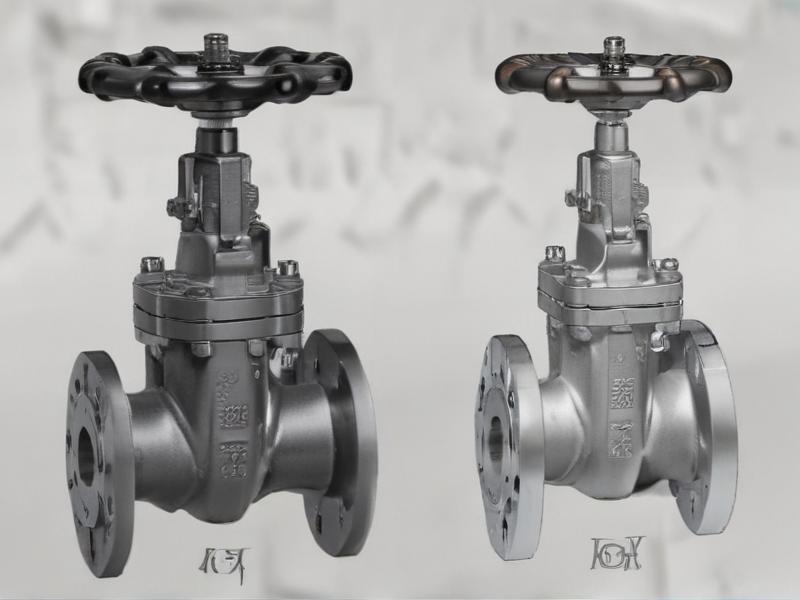
Applications of non rising stem gate valve
Non-rising stem gate valves are commonly used in various industrial applications where space limitations prevent the use of valves with rising stems. These valves are designed to operate by rotating the stem in a clockwise or counterclockwise direction to open or close the gate inside the valve body.
One of the primary applications of non-rising stem gate valves is in the oil and gas industry, where they are used to control the flow of fluid in pipelines, refineries, and petrochemical plants. These valves are able to handle high pressure and high temperature conditions, making them ideal for use in critical processes where tight shut-off is required.
Non-rising stem gate valves are also commonly used in water and wastewater treatment plants, as well as in municipal water distribution systems. These valves are able to handle a wide range of fluids, including corrosive and abrasive substances, making them versatile for various water treatment applications.
In addition, non-rising stem gate valves are commonly used in power generation plants, where they are used to control the flow of steam and other fluids in boilers, turbines, and other critical equipment. These valves are able to handle high temperature and high pressure conditions, making them essential for the safe and efficient operation of power plants.
Overall, non-rising stem gate valves are a versatile and reliable solution for various industrial applications where space limitations, high pressure, and high temperature conditions are present. Their simple design, ease of operation, and durability make them a popular choice for critical processes in industries such as oil and gas, water treatment, and power generation.
Material of non rising stem gate valve
Non-rising stem gate valves are commonly made from various materials based on the specific requirements of the application. Some of the commonly used materials for non-rising stem gate valves include:
1. Bronze: Bronze is a popular material choice for non-rising stem gate valves due to its corrosion resistance, durability, and temperature resistance. Bronze gate valves are suitable for applications where the valve may be exposed to harsh environments or corrosive fluids.
2. Cast iron: Cast iron is another common material used for non-rising stem gate valves. Cast iron gate valves are known for their strength, durability, and resistance to high temperatures. They are often used in industrial applications where high pressure and temperature conditions are present.
3. Ductile iron: Ductile iron is a type of cast iron that has been treated to improve its mechanical properties, making it more resistant to bending and breaking. Ductile iron gate valves are commonly used in water supply systems, sewage treatment plants, and other applications where the valve may be subjected to high pressure and flow rates.
4. Stainless steel: Stainless steel is a popular material choice for non-rising stem gate valves due to its corrosion resistance, hygienic properties, and durability. Stainless steel gate valves are often used in food and beverage processing, pharmaceutical, and water treatment applications.
5. Carbon steel: Carbon steel gate valves are known for their strength and durability, making them suitable for high-pressure applications. Carbon steel gate valves are commonly used in oil and gas, petrochemical, and power generation industries.
Overall, the material selection for non-rising stem gate valves depends on factors such as the application requirements, operating conditions, and budget constraints. It is important to choose the right material to ensure the longevity and efficiency of the valve in the desired application.
Quality Testing Methods for non rising stem gate valve and how to control the quality
There are several quality testing methods for non-rising stem gate valves, including visual inspection, dimensional measurement, pressure testing, and performance testing.
Visual inspection involves checking for any visible defects or irregularities in the valve body, stem, and other components. Dimensional measurement ensures that the valve meets the specified size requirements. Pressure testing involves subjecting the valve to high pressure to test its ability to withstand pressure without leaking. Performance testing involves operating the valve to ensure that it opens and closes smoothly and that it provides the required flow control.
To control the quality of non-rising stem gate valves, it is essential to establish and adhere to strict manufacturing processes and quality control procedures. Regular quality checks throughout the manufacturing process can help identify any defects or issues early on, allowing for timely corrections. Additionally, implementing a robust quality assurance system and conducting regular audits can help ensure that the valves meet the required quality standards.
Furthermore, proper training and supervision of production staff can help prevent errors and ensure that all valves are manufactured to the highest quality standards. Regular maintenance and servicing of testing equipment can also help ensure accurate and reliable test results. By consistently monitoring and controlling the quality of non-rising stem gate valves, manufacturers can ensure that their products meet customer expectations and comply with industry standards.
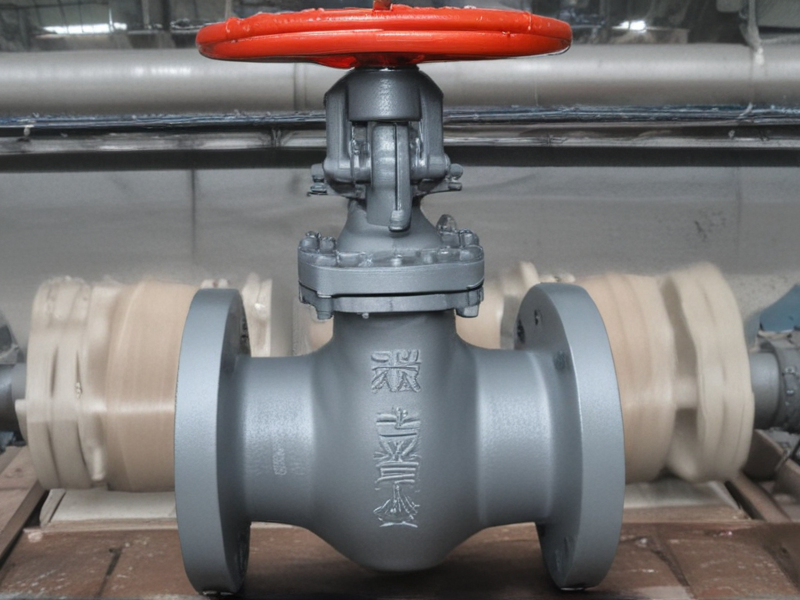
The Work Process and how to use non rising stem gate valve
When using a non-rising stem gate valve, it is important to understand the work process and how to properly operate the valve to ensure efficient and safe functioning.
1. The non-rising stem gate valve operates by turning the handwheel to raise or lower the gate within the valve body. The gate moves up and down on the threaded stem, but the stem itself does not rise or lower during operation.
2. To open the valve, turn the handwheel in a counterclockwise direction. This will raise the gate inside the valve body, allowing fluid to flow through the valve. To close the valve, turn the handwheel in a clockwise direction to lower the gate and block off the flow of fluid.
3. It is important to slowly open and close the valve to prevent damage to the gate and valve body. Rapidly opening or closing the valve can cause the gate to slam against the valve seat, leading to premature wear and potential leakage.
4. Regular maintenance and lubrication of the valve stem and gate are essential to ensure smooth operation. Inspect the valve regularly for any signs of wear or damage and replace any worn components as needed.
5. When installing or replacing a non-rising stem gate valve, ensure that it is properly aligned with the piping system to prevent any misalignment that could affect the valve’s performance.
By following these steps and understanding the work process of a non-rising stem gate valve, you can ensure efficient and safe operation of the valve in your system.
non rising stem gate valve Importing questions including Cost,Supplier,Sample,Certification and Market
When importing non-rising stem gate valves, there are several factors to consider.
Cost: The cost of non-rising stem gate valves can vary significantly depending on the size, material, and quality of the valves. It is important to compare prices from different suppliers to ensure you are getting the best deal.
Supplier: When choosing a supplier for non-rising stem gate valves, it is important to consider factors such as reputation, reliability, and experience. Look for suppliers who have a track record of delivering high-quality products on time.
Sample: Before making a large order of non-rising stem gate valves, it is a good idea to request samples from potential suppliers. This will allow you to evaluate the quality of the valves and ensure they meet your specifications.
Certification: Make sure that the non-rising stem gate valves you are importing meet the necessary certification requirements for your market. This could include certifications for safety, performance, and environmental standards.
Market: Consider the demand for non-rising stem gate valves in your target market. Research competitors, pricing, and any regulations or restrictions that may impact your ability to import and sell these products.
In conclusion, when importing non-rising stem gate valves, it is important to carefully consider factors such as cost, supplier, samples, certification, and market conditions. By conducting thorough research and due diligence, you can ensure a successful importing process.
How to find and select check reliable non rising stem gate valve manufacturers in China
To find and select reliable non-rising stem gate valve manufacturers in China, you can follow these steps:
1. Research online: Start by conducting a search on popular sourcing platforms like Alibaba, Made-in-China, or Global Sources. Look for manufacturers with a good reputation, positive reviews, and a long history in the industry.
2. Check certifications and standards: Ensure that the manufacturer complies with international quality standards and has relevant certifications such as ISO 9001, CE, or API certifications. This will guarantee the quality and reliability of their products.
3. Request samples: Before placing a bulk order, ask for samples of the non-rising stem gate valves to test their quality, durability, and performance. This will give you a firsthand experience of the product before making a decision.
4. Verify manufacturing capabilities: Make sure the manufacturer has the necessary infrastructure, equipment, and expertise to meet your specific requirements. Check if they have the capacity to handle your order size and deliver on time.
5. Request for references: Ask for references or contact their existing clients to get feedback on their products and services. This will give you insights into their reputation and reliability in the industry.
6. Negotiate terms: Once you have shortlisted a few manufacturers, negotiate the terms of the contract including pricing, delivery schedules, payment terms, and warranties. Ensure clear communication and understanding of all terms before finalizing the deal.
By following these steps, you can find and select reliable non-rising stem gate valve manufacturers in China who can meet your quality and reliability standards within your budget constraints.
Background Research for non rising stem gate valve manufacturers Companies in China, use qcc.com archive.org importyeti.com
One of the leading manufacturers of non-rising stem gate valves in China is Zhejiang Chaoding Valve Co., Ltd. The company specializes in the production and export of industrial valves, including gate valves, globe valves, check valves, and ball valves. With a strong focus on research and development, Zhejiang Chaoding Valve Co., Ltd. has established a reputation for high-quality products and reliable performance.
Another key player in the non-rising stem gate valve market in China is Tianjin Tanggu Huazhong Valve Co., Ltd. The company offers a wide range of valves for various industries, including oil and gas, petrochemical, power generation, and water treatment. Tianjin Tanggu Huazhong Valve Co., Ltd. is known for its strict quality control processes and commitment to customer satisfaction.
Additionally, Jiangsu Guolong Technology Co., Ltd. is a prominent manufacturer of non-rising stem gate valves in China. The company has a state-of-the-art production facility and a dedicated team of engineers and technicians who ensure the quality and performance of their products. Jiangsu Guolong Technology Co., Ltd. is a trusted supplier for many domestic and international clients.
Overall, these companies exemplify the high standards and advanced technology that are driving the non-rising stem gate valve manufacturing industry in China. Through their commitment to innovation and quality, they continue to meet the evolving needs of customers in various industries.
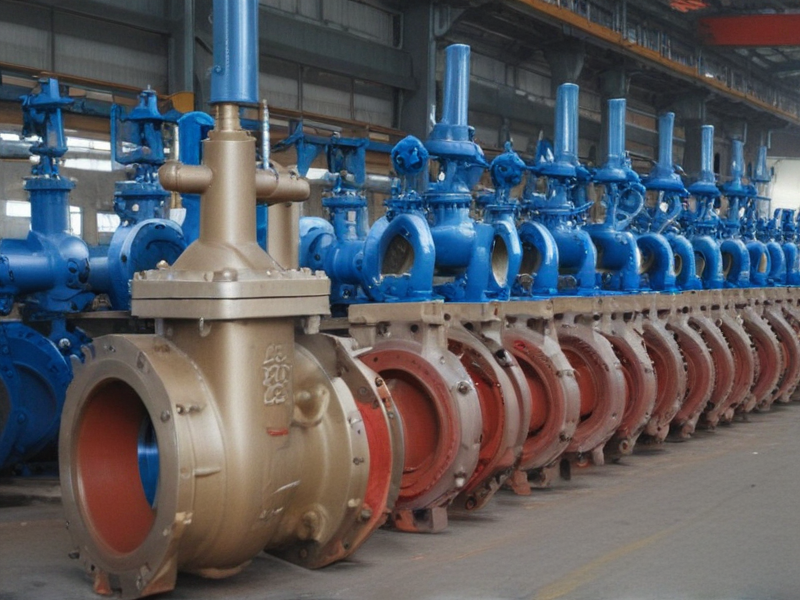
Price Cost Research for non rising stem gate valve manufacturers Companies in China, use temu.com and 1688.com
Temu.com and 1688.com are popular websites for finding manufacturers in China, including non-rising stem gate valve manufacturers. By conducting research on these platforms, it is possible to gather information on the price and cost of non-rising stem gate valves from various manufacturers.
To find non-rising stem gate valve manufacturers on these websites, simply type in the search bar the keywords such as “non-rising stem gate valve manufacturer” or “gate valve manufacturer.” This will provide a list of manufacturers in China who produce non-rising stem gate valves.
Once you have a list of manufacturers, you can then proceed to check the prices and costs of their products. Most manufacturers on these platforms provide detailed information about their products, including specifications, materials used, and pricing. You can compare the prices of different manufacturers to find the best deal.
Additionally, you can directly contact the manufacturers through the websites to inquire about pricing and costs. Some manufacturers may offer discounts or negotiate pricing based on the quantity of the order. It is essential to communicate your requirements clearly to get an accurate quote.
Overall, conducting price and cost research for non-rising stem gate valve manufacturers in China through platforms like temu.com and 1688.com can help you find the best deal for your business needs. Remember to consider factors such as quality, delivery time, and after-sales service when making your decision.
Shipping Cost for non rising stem gate valve import from China
The shipping cost for non-rising stem gate valves imported from China would vary depending on several factors such as the weight and dimensions of the shipment, the shipping method chosen, the distance to the destination country, and any additional services required.
Typically, shipping costs for a single non-rising stem gate valve can range from $25 to $100 for standard international shipping via air or sea freight. DHL, FedEx, and UPS are popular courier services that offer shipping options for small and medium-sized shipments.
For larger orders or bulk shipments, it may be more cost-effective to use ocean freight services, which can be cheaper but take longer to deliver. The average shipping cost for a full container load of non-rising stem gate valves from China to major ports in the US or Europe is around $1000 to $3000.
Additional costs to consider when importing non-rising stem gate valves from China include duties, taxes, customs clearance fees, and any storage or handling charges incurred at the port of entry. It is recommended to work with a reputable freight forwarder or customs broker who can provide accurate cost estimates and help navigate the import process smoothly.
Overall, while shipping costs for non-rising stem gate valves from China can vary, it is important to budget for all potential expenses to ensure a successful and cost-effective importation process.
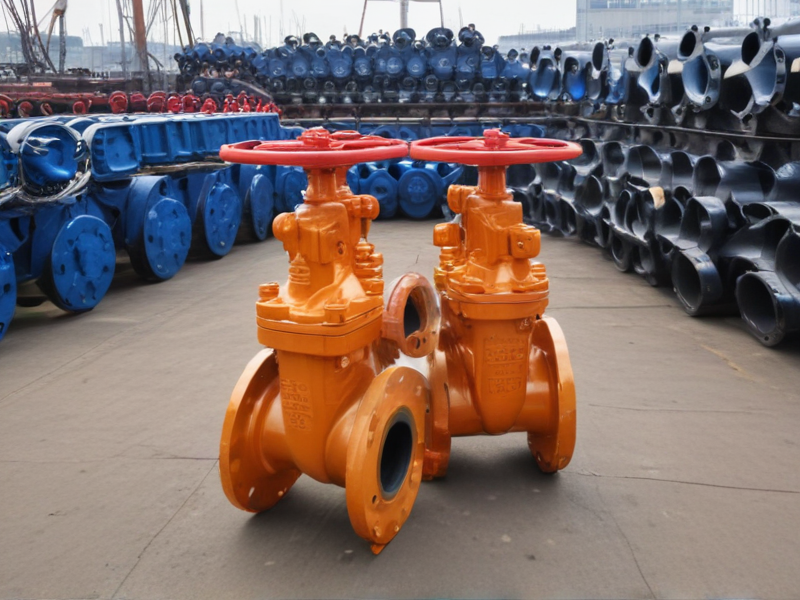
Compare China and Other non rising stem gate valve Markets: Products Quality and Price,Visible and Hidden Costs
China has become a major player in the global market for rising stem gate valves, offering a wide range of products at competitive prices. The quality of Chinese gate valves has improved significantly in recent years, with many manufacturers adopting advanced technologies and implementing strict quality control measures to ensure their products meet international standards.
In comparison, other non rising stem gate valve markets, particularly in developed countries, also offer high-quality products but at a higher price point. While the initial purchase cost may be higher, these valves may be more durable and require less maintenance over time, leading to potential cost savings in the long run.
However, it is important to consider not just the visible costs, such as the initial purchase price, but also the hidden costs associated with both Chinese and non-Chinese gate valves. For Chinese products, potential hidden costs could include longer lead times, lower customer service levels, and limited warranty coverage. On the other hand, non-Chinese products may come with additional costs such as higher shipping fees, import duties, and longer replacement part lead times.
In conclusion, there are trade-offs to consider when choosing between Chinese and non-Chinese rising stem gate valves. While Chinese products offer competitive prices and improving quality, there may be hidden costs to factor in. Conversely, non-Chinese products may come with a higher upfront cost but potentially lower long-term maintenance expenses. Ultimately, the decision will depend on the specific requirements and budget constraints of the customer.
Custom Private Labeling and Branding Opportunities with Chinese non rising stem gate valve Manufacturers
If you are looking for quality non rising stem gate valves with custom private labeling and branding opportunities, Chinese manufacturers can be an excellent choice. With their advanced manufacturing capabilities and competitive pricing, Chinese companies can provide you with a wide range of options to meet your specific needs.
By partnering with a Chinese non rising stem gate valve manufacturer, you can take advantage of their expertise and resources to create custom products that are tailored to your brand. Whether you are looking to market your valves under your own brand name or want to add custom logos and designs to the products, Chinese manufacturers can work with you to make your vision a reality.
In addition to custom branding options, Chinese manufacturers also offer a variety of packaging and shipping solutions to meet your logistical requirements. This can help streamline the process and ensure that your products arrive on time and in perfect condition.
Overall, partnering with a Chinese non rising stem gate valve manufacturer can provide you with high-quality products, competitive pricing, and custom branding opportunities to help you stand out in the market. With their commitment to excellence and dedication to customer satisfaction, Chinese manufacturers can be a valuable resource for your business.
Tips for Procurement and Considerations when Purchasing non rising stem gate valve
When purchasing a non-rising stem gate valve, there are several important considerations to keep in mind:
1. Material: Select a gate valve that is made from a durable and corrosion-resistant material such as stainless steel, brass, or bronze to ensure longevity and reliability.
2. Pressure Rating: Make sure to choose a gate valve with a pressure rating that is suitable for the intended application. Consider factors such as the operating pressure and temperature of the system.
3. Size: Choose a gate valve that is the appropriate size for the piping system it will be installed in. Ensure that the valve can handle the flow rate of the system.
4. End Connection: Consider the type of end connection required for installation, whether it be flanged, threaded, or welded. Ensure that the gate valve has the correct end connection for your system.
5. Operation: Non-rising stem gate valves are operated by a handwheel, which rotates the gate to open or close the valve. Ensure that the handwheel is easy to operate and provides smooth and precise control.
6. Manufacturer: Purchase gate valves from reputable manufacturers with a history of producing high-quality valves. This can help ensure the reliability and performance of the valve.
7. Cost: While cost is an important factor to consider, do not sacrifice quality for a cheaper price. Invest in a gate valve that meets your requirements and is of good quality, even if it means spending a bit more.
By keeping these considerations in mind, you can choose the right non-rising stem gate valve for your application and ensure smooth and efficient operation of your piping system.
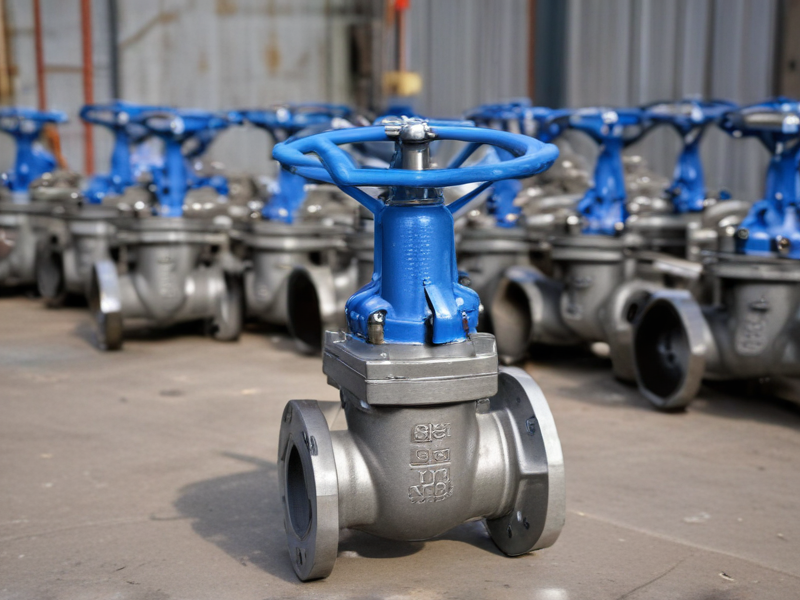
FAQs on Sourcing and Manufacturing non rising stem gate valve in China
1. What is the typical lead time for sourcing and manufacturing non-rising stem gate valves in China?
The lead time for sourcing and manufacturing non-rising stem gate valves in China can vary depending on the complexity of the product and the quantity ordered. On average, it can take anywhere from 4 to 8 weeks for production to be completed.
2. Are there any specific certifications or standards that non-rising stem gate valves manufactured in China need to adhere to?
Yes, non-rising stem gate valves manufactured in China need to adhere to international standards such as API, ANSI, DIN, and others. It is important to ensure that the manufacturer has the necessary certifications and compliance with these standards to guarantee the quality and performance of the product.
3. How can I ensure the quality of non-rising stem gate valves sourced from China?
To ensure quality, it is important to conduct thorough research on potential manufacturers, visit their facilities if possible, and request samples for testing. Additionally, working with a reputable sourcing agent or partner can help in verifying the quality and reliability of the supplier.
4. What are the cost implications of sourcing and manufacturing non-rising stem gate valves in China?
Sourcing and manufacturing non-rising stem gate valves in China can provide cost savings due to lower labor and production costs. However, it is essential to consider factors such as shipping, import duties, and quality control measures, which may impact the overall cost of the product.
5. Are there any specific challenges or considerations to keep in mind when sourcing non-rising stem gate valves from China?
Some challenges to consider when sourcing non-rising stem gate valves from China include language barriers, cultural differences, and potential communication issues. It is essential to have a clear understanding of the manufacturing process and requirements to ensure a successful partnership with Chinese suppliers.
Why contact sourcifychina.com get free quota from reliable non rising stem gate valve suppliers?
SourceChina is a reliable sourcing platform that can provide you with a free quota from trustworthy non rising stem gate valve suppliers. With their extensive network of suppliers, they can connect you with reputable manufacturers that offer high-quality products at competitive prices.
By contacting SourcifyChina for a free quota, you can save time and effort in searching for reliable non rising stem gate valve suppliers on your own. Their team of experts will help you navigate the sourcing process and ensure that you receive the best possible options for your needs.
In addition, SourcifyChina works with suppliers that are vetted for their reliability, quality, and competitive pricing. This means that you can have peace of mind knowing that you are sourcing from trusted suppliers who adhere to strict quality standards.
Overall, contacting SourcifyChina for a free quota from reliable non rising stem gate valve suppliers is a convenient and efficient way to streamline your sourcing process and ensure that you are getting the best value for your business.
